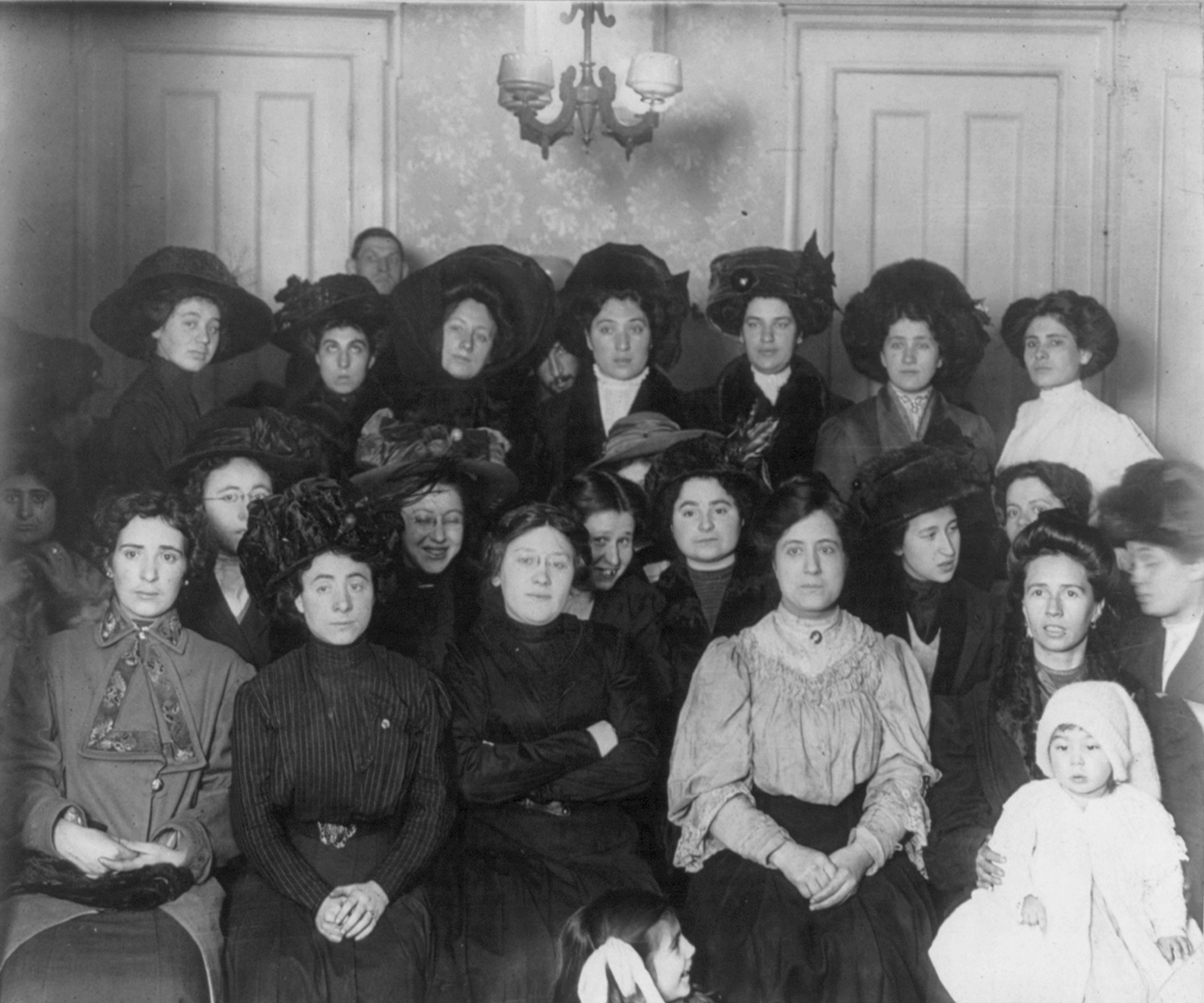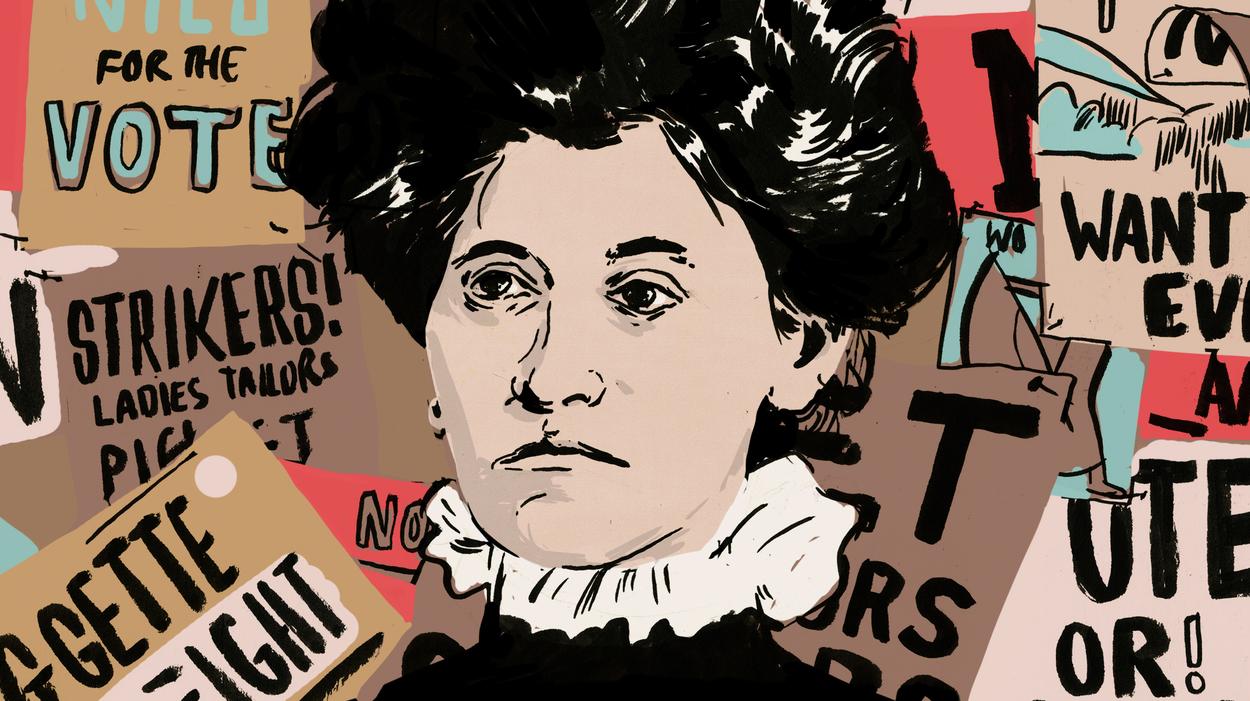Broadly – Vice – Theresa Malkiel came to New York as a teen after fleeing anti-Semitic violence in Russia. Eighteen years later, she founded Women’s Day, the forerunner of IWD.
International Women’s Day is celebrated in over one hundred countries, spotlighting women’s achievements and the continuing struggle for equality. Sometimes overlooked, however, is the holiday’s radical origins, including the rabble-rousing activists who first instigated it. Key among these is a woman who rose from the sweatshops of early 20th century New York to become a game-changing campaigner: Theresa Malkiel.
Although the exact origins of International Women’s Day are not entirely clear, Malkiel is credited with founding its forerunner, Woman’s Day. Significant though this was, Woman’s Day was far from her only achievement. Theresa dedicated her life to bettering conditions for working-class women and immigrant women, focusing on critical issues like suffrage, naturalization, and access to education. Sadly, unlike many of her contemporaries, Malkiel’s life is, as historian Sally M. Miller writes, “not well known and the record of her work remains hazy.”
What we do know about Malkiel shows her to be a tenacious woman with a deep sense of justice. She arrived in New York aged 17 in 1891 with her family after fleeing anti-Semitism in Russia. Like many young female immigrants, she was forced to provide for herself, finding work as a cloakmaker in the notoriously exploitative garment industry. Conditions were appalling: dangerously overcrowded factories and 65-hour working weeks were common; workers had to supply sewing materials out of their own paltry wages and were often locked in to prevent them taking breaks.
Convinced that the only way to fight these injustices was by women standing together, Malkiel became a labor organizer. For her solidarity was not enough; it had to be bolstered by strategic action. As Miller observes: “Experience had taught her that America for single immigrant women was less than what earlier dreams may have suggested; life itself had radicalized her.”
Malkiel used her considerable skills as a writer to chronicle the garment workers struggle. “She wrote for the Socialist Party’s daily newspaper in New York City at the time of the great shirtwaist makers uprising in 1909,” Dartmouth College history professor Annelise Orleck tells me. “It involved between 20 and 40,000 garment workers making it the largest women’s strike of that time. Theresa wrote about that strike and became really interested in using these strikes, which involved a lot of women in the streets, to begin to draw public attention to the conditions that workers experienced.”
Published in 1910, Malkiel’s novel, The Diary of a Shirtwaist Striker, captured the bravery of the strikers. The book’s dedication reads: “To the nameless heroines of the Shirtwaist Makers Strike this diary is lovingly dedicated by the author.” After the Triangle Shirtwaist Factory fire in 1911 in which 146 garment workers died, Malkiel’s novel and the public attention it received helped reform labor laws.

‘’Yes, they were very difficult conditions, and I want to use this opportunity to say that they are still very difficult conditions,” says Orleck when I ask about the predicament faced by garment workers like Malkiel. “A whole variety of issues have eroded the kinds of victories that were won by the early 20th century labor movement—maximum hours, overtime pay, weekends—things that had come to be standard, are no longer standard, not just in the United States but around in the world. The [garment] industry tripled in the last eighteen years. Between 2000 and 2015 we went from about 20 million garment workers to between 65 and 70 million around the world. Most of them are women and they are very much engaged in the global struggle that is quite similar to the one Theresa Malkiel wrote about in 1909.”
Malkiel joined the Socialist Party of America, and was subsequently elected to its Women’s National Committee. It was during her time on the committee that Malkiel established Woman’s Day, which was held in New York in February 1909. On that day, a 2,000 strong crowd gathered outside the Murray Hill Lyceum on Thirty-Fourth Street to listen to feminist and socialist women speakers outline the importance of equality and the urgency of women’s suffrage.
“They certainly were,” replies Dr. Deborah Stienstra when I ask if Malkiel and her contemporaries were radicals. Stienstra has written extensively about international feminist movements. To contextualize the struggles faced by women like Theresa, she refers to the famous labor movement song “Bread and Roses.”
“If you’ve ever sung the song,” Stienstra says, “you’ll know it was about women’s access to food for their families and their ability to work and to celebrate that, to recognize that these were working women—these weren’t bourgeois women; these were women who really needed to be part of economic production in order for their families to survive.”
Although Malkiel eventually married a businessman, thus escaping factory life, her commitment to social justice never waned. Her perspective can perhaps be best illustrated in her writing. Long before Hillary Clinton made famous the refrain of “women’s rights are human rights,” Malkiel made the connection in a 1909 essay.
“The woman question,” she wrote, “is nothing more or less than a question of human rights. That the emancipation of woman means in reality the emancipation of the human being within her.’”
I ask Stienstra what women today can learn from Malkiel and the women rebels of her era. “I think the most important lesson is to work together for change,” she says. “We are stronger together. The single voice isn’t enough. We need to stand together and to be consistent over time and resist and fight against oppression and fight for others who don’t have the same access to that collective power.”


